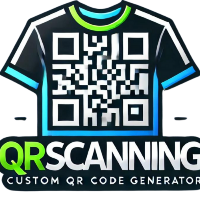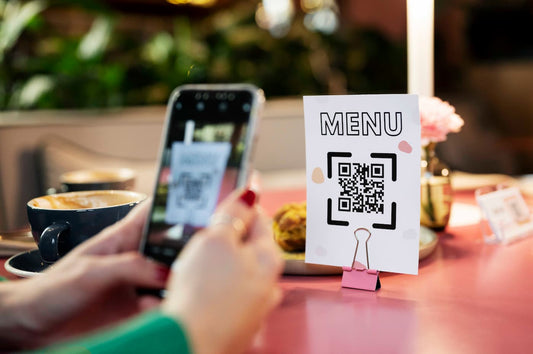
Share
Small Business QR Codes: A Smart Way to Grow and Connect
Estimated Reading Time: 9 minutes
Key Takeaways:
- QR codes are easy and cost-effective tools for small businesses.
- They provide a quick connection to your customers.
- They can save time through automation.
- Through tracking features, they offer valuable insights for your business.
Table of Contents
- What is a QR Code?
- Benefits of Using a QR Code for Small Businesses
- Applications of QR Codes in Small Businesses
- How to Implement QR Codes in Your Small Business
- Tips for Maximizing the Effectiveness of QR Codes
- Potential Challenges and How to Solve Them
- Case Studies: How Small Businesses Use QR Codes to Grow
- Future trends: Where Small Business QR Codes Are Going
- Conclusion: Small Business QR Codes Are a Must-Have Tool
What is a QR Code?
A QR (Quick Response) code is a two-dimensional barcode that can be scanned using a smartphone camera to quickly access information, websites, or perform actions. Originally developed for tracking automotive parts, QR codes have evolved into powerful marketing and customer engagement tools for businesses of all sizes.
For small businesses, QR codes represent a bridge between the physical and digital worlds, allowing customers to instantly connect with your brand, products, or services with just a simple scan.
Benefits of Using a QR Code for Small Businesses
Cost-Effective Marketing Solution
QR codes are incredibly affordable to create and implement. Unlike traditional advertising methods, they require minimal ongoing costs while providing maximum reach and engagement potential.
Enhanced Customer Experience
QR codes eliminate friction in the customer journey by providing instant access to information, menus, contact details, or special offers without the need for typing URLs or searching.
Trackable and Measurable
Modern QR code platforms provide detailed analytics, allowing you to track scan rates, locations, device types, and user engagement patterns to optimize your marketing strategies.
Contactless Interactions
In today's health-conscious environment, QR codes enable contactless transactions, menu viewing, and information sharing, making customers feel safer while engaging with your business.
Applications of QR Codes in Small Businesses
Restaurant and Food Service
Digital menus accessed via QR codes have become standard practice, reducing printing costs and allowing for real-time menu updates and special promotions.
Retail and E-commerce
Link physical products to online reviews, detailed specifications, or purchasing options. QR codes on product packaging can drive customers to your online store or loyalty programs.
Professional Services
Share contact information, appointment booking links, testimonials, or portfolio examples instantly. Perfect for networking events and business card alternatives.
Event Management
Streamline event check-ins, provide event schedules, share presentation materials, or collect feedback through QR codes placed strategically throughout your venue.
How to Implement QR Codes in Your Small Business
Choose the Right QR Code Generator
Select a reliable platform like qrscanning.com that offers dynamic QR codes, analytics, and customization options suitable for business use.
Define Your Objectives
Before creating QR codes, clearly define what you want to achieve: drive website traffic, increase social media followers, boost sales, or collect customer feedback.
Design for Your Brand
Customize your QR codes with your brand colors, logo, and design elements to maintain consistency with your overall marketing materials.
Strategic Placement
Position QR codes where customers naturally look: receipts, business cards, storefront windows, product packaging, and marketing materials.
Tips for Maximizing the Effectiveness of QR Codes
Provide Clear Instructions
Include brief text like "Scan for menu" or "Scan for special offers" to clearly communicate the value proposition of scanning your QR code.
Ensure Mobile Optimization
Since QR codes are primarily scanned by mobile devices, ensure that your landing pages, forms, and content are fully optimized for mobile viewing.
Test Regularly
Regularly test your QR codes across different devices and scanning apps to ensure they work consistently and load quickly.
Offer Immediate Value
Reward users for scanning by providing exclusive content, discounts, or useful information that they can't easily find elsewhere.
Potential Challenges and How to Solve Them
Low Adoption Rates
Solution: Educate customers about QR code benefits and provide clear incentives for scanning, such as exclusive discounts or valuable content.
Technical Issues
Solution: Use high-quality QR code generators, test across multiple devices, and ensure adequate size and contrast for easy scanning.
Security Concerns
Solution: Use reputable QR code platforms, clearly brand your codes, and educate customers about safe QR code practices.
Case Studies: How Small Businesses Use QR Codes to Grow
Local Restaurant Success
A family-owned restaurant increased customer engagement by 40% after implementing QR codes for digital menus and customer feedback collection, while reducing printing costs by 70%.
Retail Store Innovation
A boutique clothing store used QR codes to link physical items to styling videos and customer reviews, resulting in a 25% increase in sales conversions.
Service Business Growth
A local plumbing company placed QR codes on service trucks linking to customer review pages and appointment booking, leading to 60% more online reviews and 30% more bookings.
Future Trends: Where Small Business QR Codes Are Going
Integration with Augmented Reality
QR codes will increasingly trigger AR experiences, allowing customers to visualize products in their space or access immersive brand content.
Advanced Analytics and AI
Future QR code platforms will offer more sophisticated analytics and AI-powered insights to help businesses understand customer behavior patterns.
Voice and Audio Integration
QR codes will connect to voice messages, audio tours, and podcast content, expanding beyond visual content to create multi-sensory experiences.
Conclusion: Small Business QR Codes Are a Must-Have Tool
QR codes represent one of the most accessible and effective digital marketing tools available to small businesses today. They bridge the gap between offline and online experiences while providing measurable results and cost-effective customer engagement.
By implementing QR codes strategically across your business operations, you can enhance customer experiences, streamline processes, and gain valuable insights into customer behavior. The key to success lies in providing clear value to customers who scan your codes and continuously optimizing based on analytics and feedback.
Start small, test different applications, and gradually expand your QR code usage as you see positive results. With the right approach, QR codes can become a powerful driver of growth and customer connection for your small business.
Frequently Asked Questions
How effective are QR codes for small businesses?
QR codes are highly effective when implemented correctly. Studies show that QR code scanning has increased by over 750% since 2020, with small businesses reporting improved customer engagement, reduced operational costs, and better tracking capabilities.
What are some examples of successful QR code campaigns?
Successful examples include restaurants using QR codes for contactless menus (reducing printing costs by up to 80%), retail stores linking products to online reviews and purchases (increasing conversion rates by 20-30%), and service businesses using QR codes for quick appointment booking and customer feedback collection.
Are QR codes expensive to produce or manage?
No, QR codes are very cost-effective. Basic QR codes can be generated for free, while advanced dynamic QR codes with analytics and customization typically cost between $5-50 per month depending on usage volume and features needed.
What are the future trends for QR codes in small businesses?
Future trends include integration with augmented reality experiences, advanced AI-powered analytics, voice and audio content delivery, and enhanced personalization based on customer scanning history and preferences.


